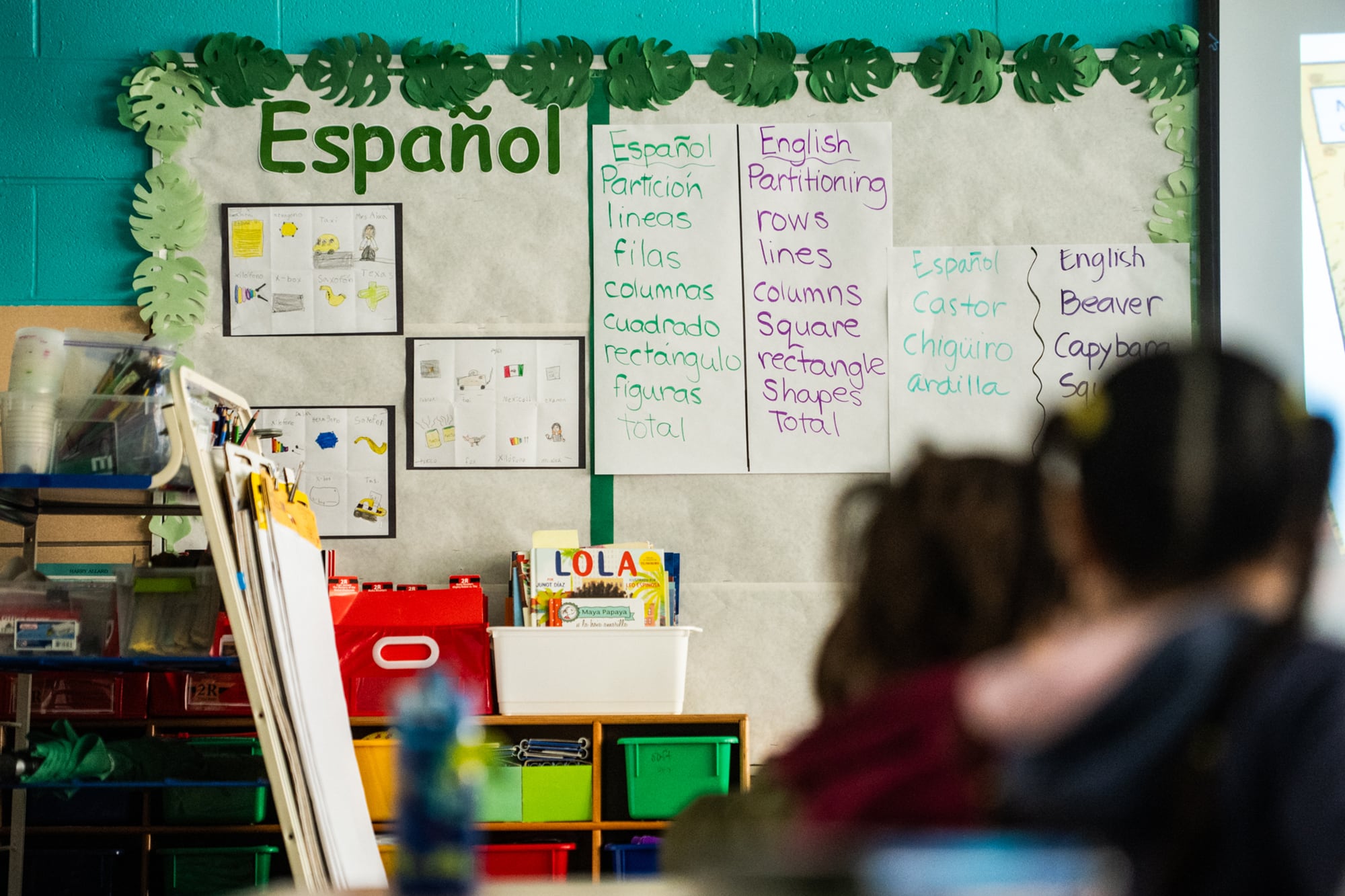Sign up for Chalkbeat Chicago’s free daily newsletter to keep up with the latest education news.
For the past two years, thousands of migrant families fleeing political and economic turmoil south of the border have come to Chicago. And in that time, thousands of their children — most learning English as a new language — have enrolled in schools across the city.
But many of those children don’t have easy access to services they need to thrive in school.
A recent Block Club Chicago and Chalkbeat investigation found that many families have found affordable housing in majority Black communities where schools have traditionally served relatively few English-language learners. That’s left many migrant students without services that will help them adjust and advance in school.
Here are five main takeaways from the investigation:
1. Many migrant families are finding affordable housing in Chicago’s majority Black, low-income neighborhoods.
Officials’ main strategy to get migrant families into permanent housing is a state initiative called the Asylum Seeker Rental Assistance Program.
Run by the Illinois Housing Development Authority and the Illinois Department of Human Services in partnership with Catholic Charities, the program covers three months of rent for people migrating from the southern border who are seeking asylum and arrived in the city’s shelters before Nov. 17, 2023.
Nearly 60% of the roughly 5,000 families using the program as of April to resettle in Chicago have found apartments in predominantly Black, low-income communities on the South and West sides, such as South Shore and Austin, according to data obtained through an open records request.
2. Many kids are enrolling in segregated schools that have little to no bilingual support.
Schools in these neighborhoods typically have not served a large number of English language learners, meaning they often don’t have staff certified to teach those kids. Now, as migrant students enroll in these schools, teachers are feeling overwhelmed and under-equipped to serve them. The lack of resources has left migrant kids struggling to learn and ask simple questions in class.
As of April, Chicago Public Schools had identified more than 70 schools that lacked enough English as a Second Language or bilingual teachers. More than 40 percent of them were in majority Black, low-income neighborhoods where migrant families were getting apartments.
3. Other students are traveling lengthy distances to better-resourced schools.
Rather than sending their children to under-resourced schools, some parents are opting to keep their children enrolled at schools with more bilingual resources near shelters where they used to live.
Often that means families are spending up to three to four hours a day commuting to and from school. Some kids still aren’t getting enough language support at those schools, even though they have more bilingual resources.
4. Chicago Public Schools officials say they’re prioritizing extra support for schools without enough resources.
District officials acknowledge that dozens of schools need more bilingual staff, but they said a nationwide bilingual teacher shortage has made hiring difficult.
Officials said they’re trying to attract more bilingual educators by subsidizing the cost of earning bilingual or ESL credentials and extending early job offers to teachers who are completing their requirements.
CPS officials say they’re prioritizing schools on the South and West sides that are in so-called “language deserts.”
5. CPS has a long history of failing students learning English.
The school district’s struggles come after years of not being in compliance with state and federal laws for bilingual education.
In recent years, the vast majority of schools with bilingual programs that the district has monitored have failed internal and state audits. They’ve fallen short of a range of requirements, such as providing bilingual instruction in core subjects to all students who need it, having properly certified teachers, and teaching students about their native country and culture.
Now, the arrival of many migrant families continues to test whether the district can do better by students learning English as a new language.
Reema Amin is a reporter covering Chicago Public Schools. Contact Reema at ramin@chalkbeat.org.
Mina Bloom is an investigative reporter at Block Club Chicago. Contact Mina at mina@blockclubchi.org.






